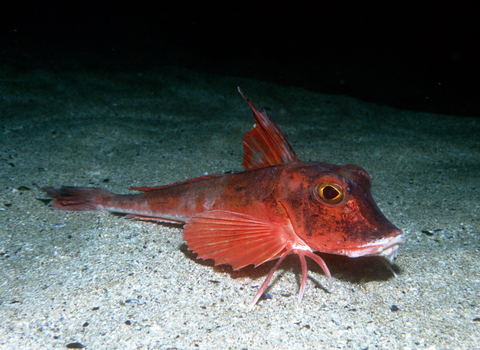
Red gurnard ©Bernard Picton
Red gurnard
This brightly coloured and easily recognizable fish is one of three gurnard species found in UK seas. Collectively, gurnards are known as sea robins.
Scientific name
Chelidonichthys cuculusWhen to see
January to DecemberTop facts
Stats
Length: up to 70cmCommon, classified as Least Concern on the IUCN Red List.
About
Red gurnards are bottom-dwelling fish to be found on gravelly, sandy, or rocky seabeds around the UK. They feed on worms and crustaceans.The lowest three spines of the pectoral fin are separated and used to probe the seabed for hidden prey - they look a bit like legs and can give the impression that the red gurnard is 'walking'!
